The Butterfly Pavilion’s Spiders Around the World exhibit is back in time for a second autumn of creepy crawlies. We visited the Member Preview Night yesterday to get a first look at the orb weavers, spiderlings, and tarantulas.
Last year, our daughter was given a membership to the Butterfly Pavilion as a gift (thanks Rachele & Scott) and when the Spider Zone was rolled out for October, we were excited, but I also had questions. “This is kind of a crazy idea, right?” I asked one of the staff members as he guarded a mesh net that divides the spider area from the rest of the butterfly enclosure. He shrugged warily, “We’ve already had one butterfly get in there.” I was delighted as we crossed through the net and could see giant orb weavers hanging out in the plants.
The butterfly exhibit’s entrance and exit each have a set of double doors, meant to keep the butterflies contained and stop any stowaways who might escape on someone’s clothes. For Spiders Around the World, a quarter of the area (about 80 feet) is netted off for the orb weavers and staff members stop visitors at the entrance and exit of this section to make sure butterflies and spiders do not mix.
This year, as we looked forward to the event, my daughter and I wondered how they know the spiders won’t lay eggs before Halloween, hiding a timebomb of little spiders ready to feast on butterflies. I again asked the staff member at the net about it. He seemed less apprehensive this year but acknowledged that the spiders might lay eggs, but their egg sacs—bundles of eggs wrapped in silk—should be fairly obvious and take time to hatch (2-3 weeks is average for most spider species). People were supposed to keep an eye out for egg sacs during the run of the exhibit.
The Spider Zone houses 300 individual orb weavers and I think we saw about 30. It makes you wonder, right…? Whereas last year, most of the spiders had built webs higher up, this year many of them were working lower to the ground. My daughter was pointing excitedly and it did not seem unlikely that she would end up sticking her finger right in a web. We did get to see the spiders close-up, including one eating a butterfly (oops) and one eating a cricket. Mostly, they were peacefully sitting in their webs, like art hanging in a gallery.
Opening Night was slammed last year, but yesterday the event was quieter, which meant we got a better chance to explore, talk to the experts, and take our time looking at the spiders. I hope that the difference in turnout does not reflect on enthusiasm for the exhibit, because it is awesome and, if you can, I recommend visiting and supporting the Butterfly Pavilion’s work with invertebrates.
The Best Spiders at the Butterfly Pavilion
I’m taking Rosie and Goldie the tarantulas out of the running since they are regular stars of the show. Julio and our daughter hold them whenever they get the chance.
Antilles Pink-Toed Tarantula
This spider is housed in the Origins gallery near the Itsy-Bitsy Spiderling Nursery. I enjoy checking out the orb weaver area, but this is the spider I cannot stop thinking about. So pink. So fluffy. This species primarily lives in tropical rainforests and preys on flying insects. The females can live for twelve years.
After you look at this beauty, do check out the Itsy-Bitsy Spiderling Nursery. It was interesting to see tarantuals in a much smaller stage of development. While we were over there, another guest was absolutely gushing over them, remembering when his pet tarantula was that size. It was all pretty cute.
Regal Jumping Spider
While we visited the Ask an Expert and Animal Meet & Greet tables, I talked with the expert about the jumping spider who took up residence on my beehive. She said Jumping Spiders love to eat bees, pollen, and bees covered in pollen.
At another table, I asked a staff member which spider was the best. She mentioned the Green Lynx spiders, which were very cool, and the Jumping Spiders (also in the Origins room), because they were so much bigger than the ones they had housed previously at The Butterfly Pavilion. I took a look. I think Jumping Spiders are so cute and their eyesight is amazing. But I also think Dot from my beehive was much bigger than this spider. I hope not from eating my bees.
Over in The Spider Zone, all of the orb weavers were cool. The Banded Garden Spider and Yellow Garden Spiders were already busy building webs. My favorites from that section, though were the Golden Orb Weaver and Giant Golden Orb Weaver.
Golden Orb Weaver
I took many pictures of this kind of spider and did not realize they were all the same kind of spider until I cross-referenced my photos with the exhibit guide when I got home. The Golden Orb Weavers were very active and looked so different from different angles. The red underside of their bodies is beautiful! And I like their fuzzy knees. According to the exhibit materials, “Silk from this spider has recently been tested as a novel way to reconnect severed nerve cells within human bodies.”
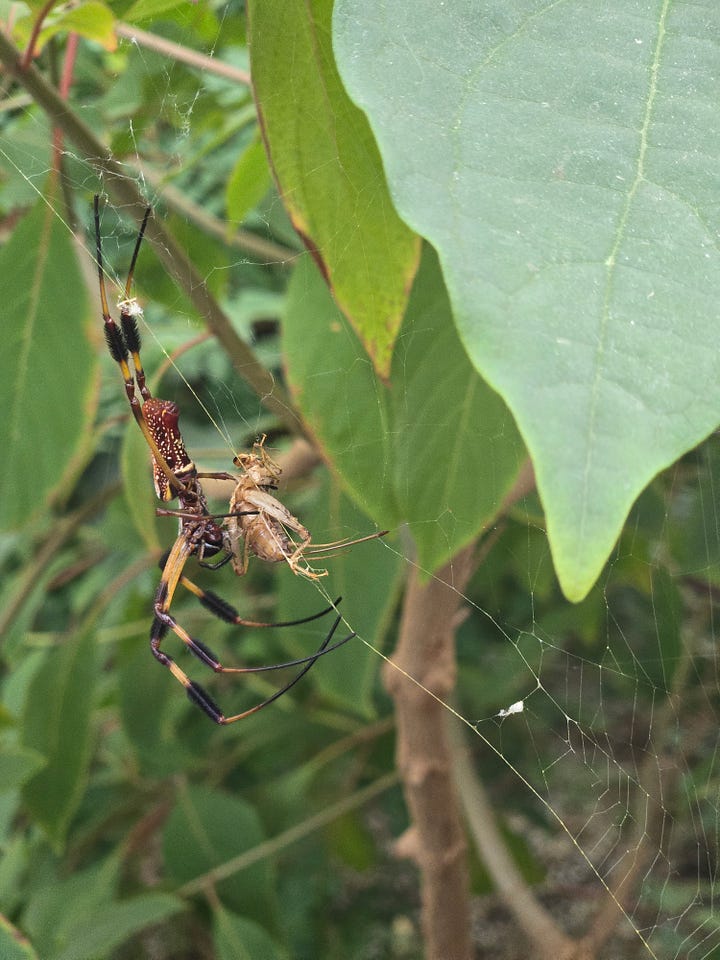
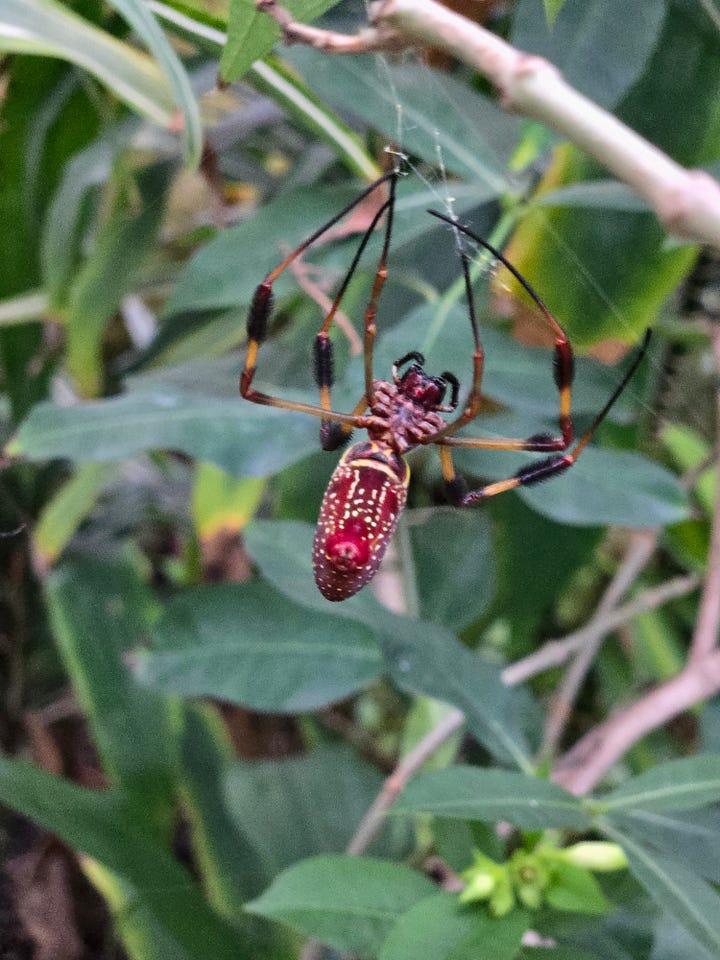
Giant Golden Orb Weaver
These spiders are native to Southeast Asia and the Indo-Pacific. They get a shoutout because they are so BIG. The females, at least. Most spiders have some degree of sexual dimorphism—meaning that males and females are different in size or coloring. But the Giant Golden Orb Weaver takes this trait to an extreme. Scientists hypothesize that either females exhibit gigantism or males exhibit dwarfism. Males can be 4-10 times smaller than the females. These spiders mostly hung out higher in the trees and I was not mad about that.
Finged Ornamental Tarantula
The Fringed Ornamental Tarantula is in the Survival Exbibit (which is the area where you can hold Rosie) next to the case with a Black Widow, and I could not get a good picture through the glass. It is massive and has a beautiful pattern on its body. I did not get to look at it as long as I wanted before I was pulled away, but I was fascinated.
My daughter’s favorite spider was the wind-up toy spider she got at the trivia table, even though she got the answer wrong.
Have you ever held a tarantula? Do you have a favorite spider? Let me know in the comments.
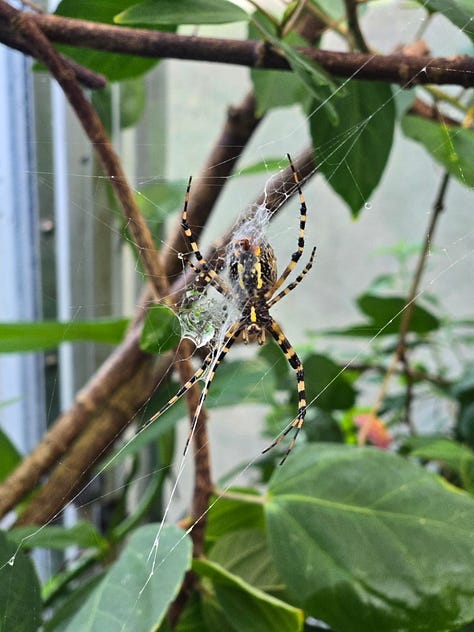

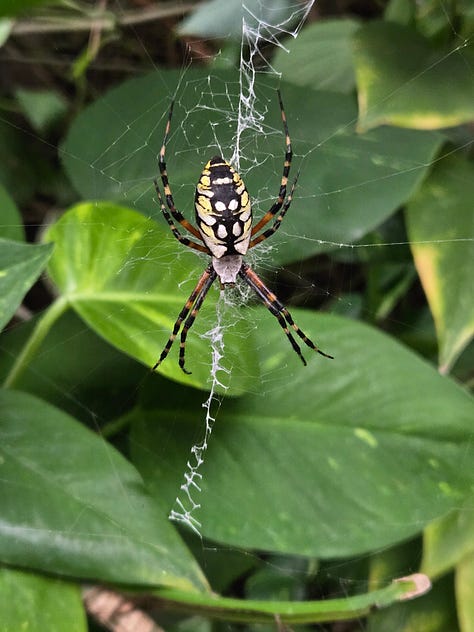

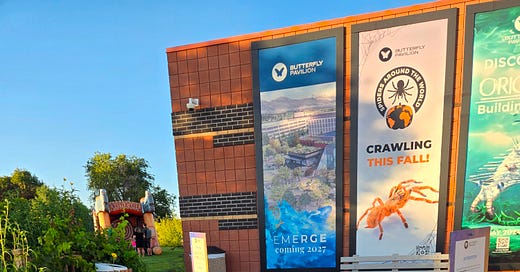



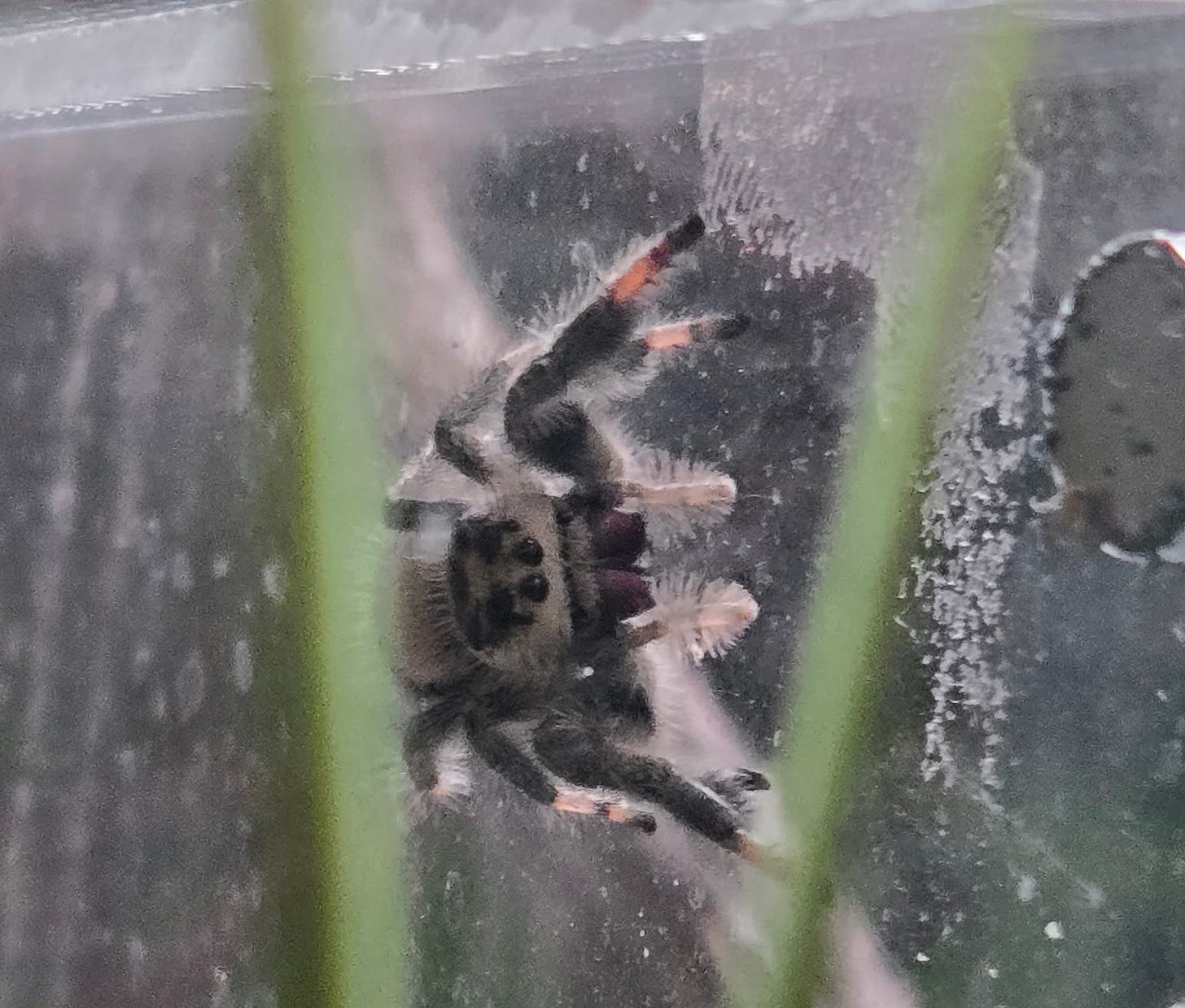
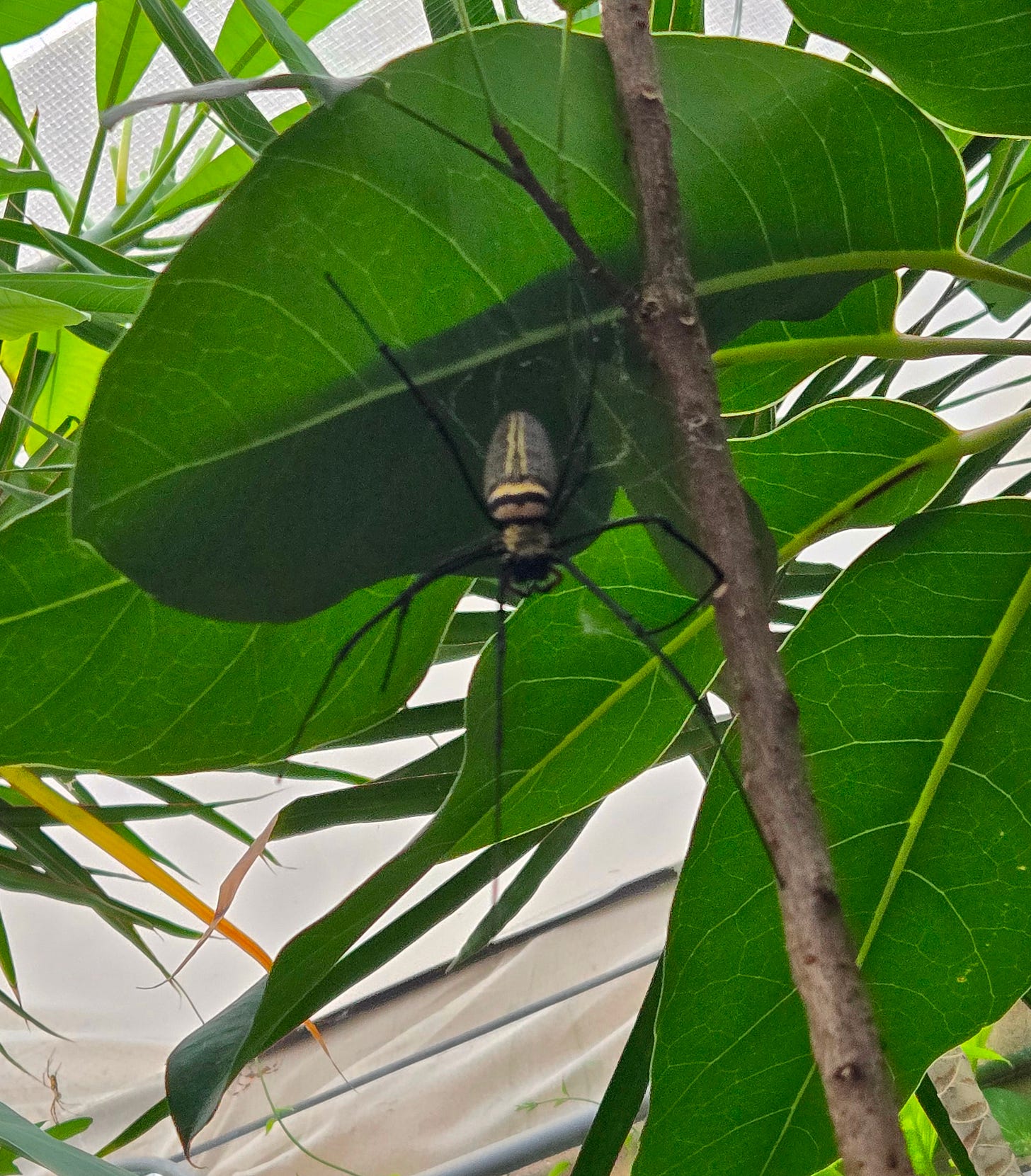
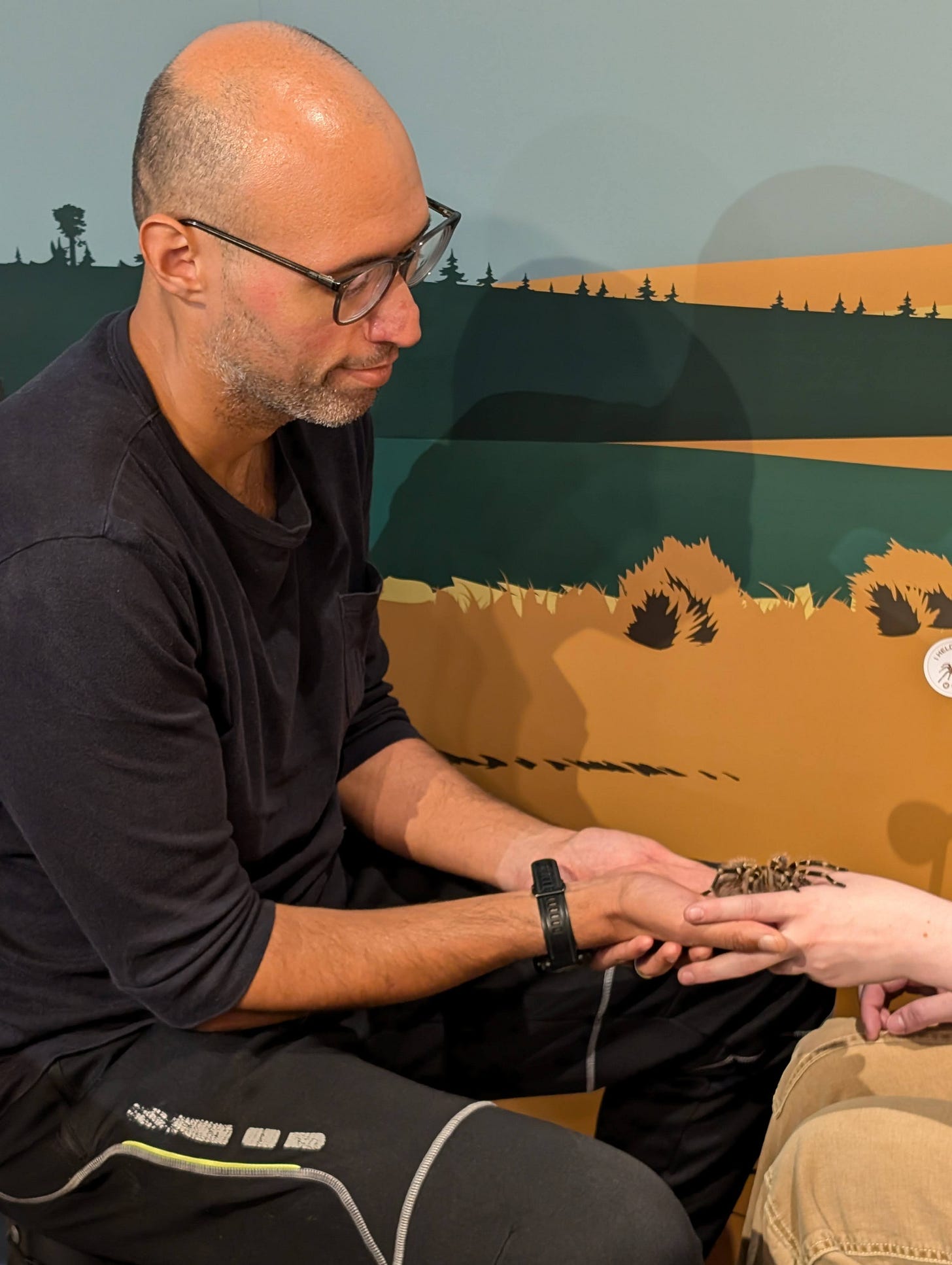
This was a great read. No spider is killed in my house... if we were to find a brown recluse I am not so sure about that moral dilemna. At 3 or 4 Cory held a large Wolf Spider in his hand without fear. Thank you for sharing.
I love butterfly exhibits, but I think I’ll pass on the spiders.
Again, your writing & details of everything is fantastic!